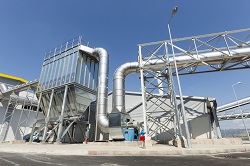Economic, high-performance and clean auxiliary power
Fuel cells that convert the chemical energy in fuels into electrical energy have been the subject of intense research and development as a clean and alternative form of energy technology. Such technology is on the verge of large-scale commercialisation with solid oxide fuel cells (SOFCs) being among the most attractive due to the flexibility of fuels supported combined with high energy conversion efficiency. Ceramic anode-supported SOFCs now represent the state of the art in this class of fuel cell, yet they still face issues related to cost, reliability and the ability to handle power transients. EU funding of the project 'Development of next generation metal based SOFC stack technology' (METSOFC) is enabling scientists to exploit the advantages of novel metallic materials and insulating materials between layers to overcome these issues. The metal-based SOFC technology is expected to enhance functionality, reliability and reproducibility while reducing manufacturing costs, particularly as related to auxiliary power units (APUs) in mobile applications. During the first reporting period, scientists evaluated five different metal powders and developed suitable coatings for stainless steel interconnect strips, resulting in a production-scale test of coated steel. They also found a new metal powder suitable for metal supports that is potentially superior to current applications. Several small stacks were then built to evaluate repeatable units and stack-sealing technologies, leading to production of the first test stack. METSOFC adopted a reliability and assessment technique suitable for mechanical vibration and shock that was previously used for advanced automotive components development. Scientists are using this technique for the first time to test an SOFC stack. Tests performed so far include those to characterise cell performance and redox tolerance. Scientists expect to deliver metal-supported SOFCs appropriate for mobile APU applications requiring combined fuel flexibility and robustness. Reduced costs and higher performance should provide incentive for users to choose the metal alternative to ceramic anode-supported SOFCs.







